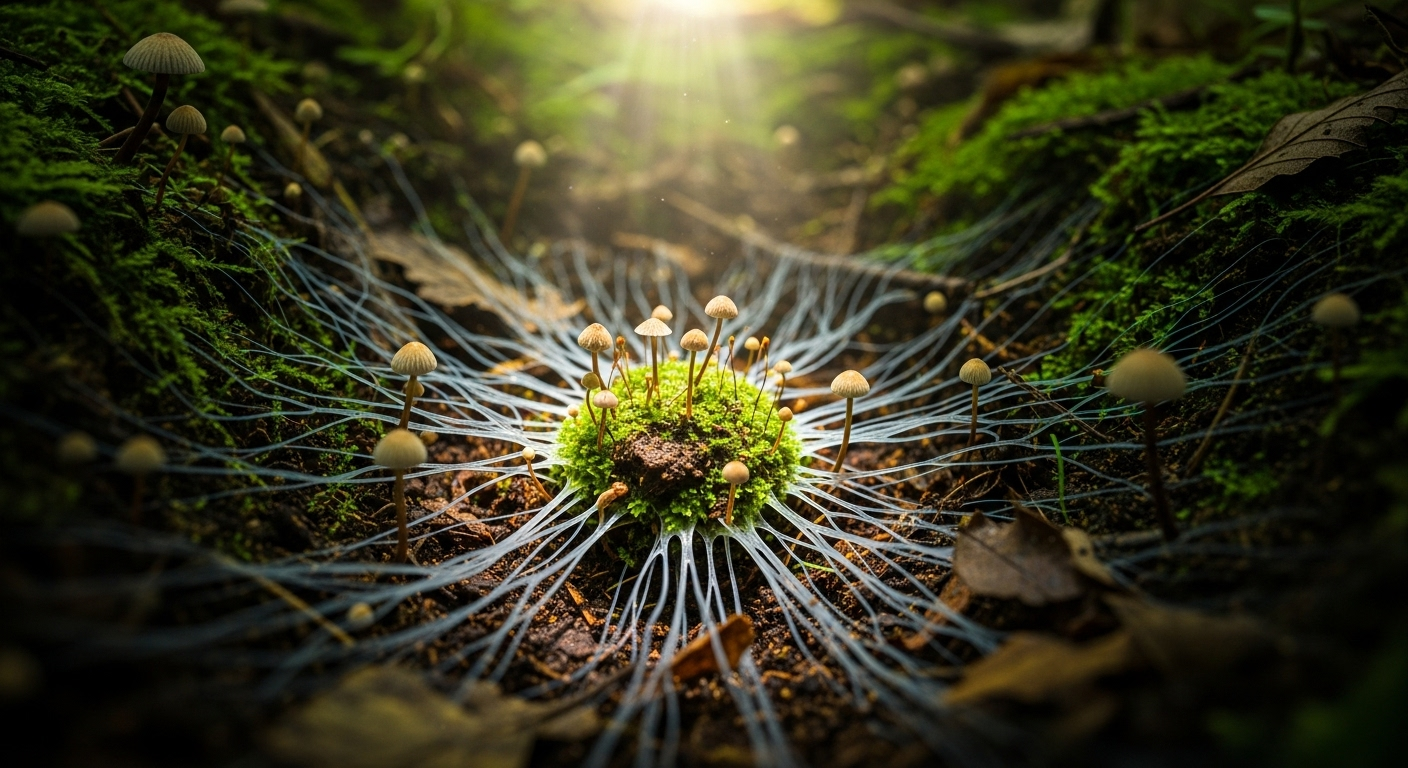Mycelial Networks: Nature's Hidden Health Allies
The quiet revolution of fungal intelligence is reshaping our understanding of health and ecosystems. What if the key to unlocking new frontiers in medicine and environmental restoration lies beneath our feet? Enter the fascinating world of mycelial networks, the underground internet of nature that's capturing the attention of scientists and wellness enthusiasts alike.

The Hidden World Beneath Our Feet
Mycelial networks are the vegetative part of fungi, consisting of thread-like structures called hyphae. These networks form vast underground systems that can span for miles, connecting different plants and trees in a complex web of communication and resource sharing. Scientists have dubbed this network the Wood Wide Web, highlighting its similarity to our own internet in terms of information and resource transfer.
The discovery of mycelial networks dates back to the late 20th century, but it’s only in recent years that researchers have begun to fully appreciate their significance. These networks facilitate the transfer of nutrients, water, and even chemical signals between plants, allowing for a level of ecosystem cooperation previously unimagined.
Mycelial Networks and Ecosystem Health
Mycelial networks play a vital role in maintaining ecosystem health. They act as nature’s recyclers, breaking down organic matter and releasing nutrients back into the soil. This process is crucial for soil fertility and plant growth, making mycelial networks essential for forest regeneration and agricultural sustainability.
Moreover, these networks enhance the resilience of plant communities. Through mycelial connections, stronger trees can share resources with weaker ones, helping to maintain biodiversity and ecosystem stability. This natural support system has profound implications for conservation efforts and could inform new approaches to sustainable agriculture.
The Potential of Mycelial Networks in Human Health
While the ecological benefits of mycelial networks are well-documented, their potential applications in human health are just beginning to be explored. Researchers are investigating how the compounds produced by various fungi in these networks could be harnessed for medicinal purposes.
Some fungi in mycelial networks produce powerful antimicrobial compounds, which could lead to the development of new antibiotics. This is particularly significant given the growing threat of antibiotic-resistant bacteria. Additionally, certain fungi have shown promise in boosting immune function and potentially fighting cancer cells.
Mycelial-Inspired Technologies
The structural and functional properties of mycelial networks are inspiring innovative technologies across various fields. In the realm of sustainable materials, researchers are developing mycelium-based alternatives to plastics and building materials. These biodegradable options could revolutionize packaging and construction industries, offering eco-friendly solutions to pressing environmental challenges.
In the field of bioremediation, scientists are exploring how mycelial networks can be used to clean up polluted soils and water bodies. The ability of fungi to break down complex organic compounds makes them excellent candidates for environmental cleanup efforts, potentially offering natural solutions to contamination issues.
The Future of Mycelial Research in Wellness
As our understanding of mycelial networks deepens, new possibilities in wellness and healthcare are emerging. Researchers are investigating how the communication principles observed in these networks could inform new approaches to understanding and treating neurological disorders. The complex signaling pathways in mycelial networks bear striking similarities to neural networks in the human brain, opening up fascinating avenues for neuroscience research.
Furthermore, the study of mycelial networks is shedding light on the importance of interconnectedness in health and wellbeing. This holistic perspective aligns with growing trends in integrative medicine, emphasizing the need to consider the broader ecosystem of health rather than isolated symptoms or conditions.
Fungal Facts and Wellness Insights
-
Mycelial networks can transfer carbon, nitrogen, and other nutrients between trees, sometimes over distances of 20 meters or more.
-
Some fungi in mycelial networks can break down pollutants like oil, pesticides, and even plastics, offering natural solutions for environmental cleanup.
-
The largest known organism on Earth is a honey fungus in Oregon’s Malheur National Forest, spanning an area of about 2,385 acres.
-
Certain medicinal mushrooms, part of mycelial networks, have been shown to have immune-boosting and anti-inflammatory properties.
-
Mycelium-based materials are being developed as sustainable alternatives to leather, plastics, and even building insulation.
As we continue to unravel the mysteries of mycelial networks, we stand on the brink of a new era in health and environmental science. These intricate fungal webs offer lessons in resilience, cooperation, and holistic wellbeing that could transform our approach to healthcare and ecological restoration. By looking to nature’s hidden networks, we may find solutions to some of our most pressing health and environmental challenges, paving the way for a more interconnected and sustainable future.





